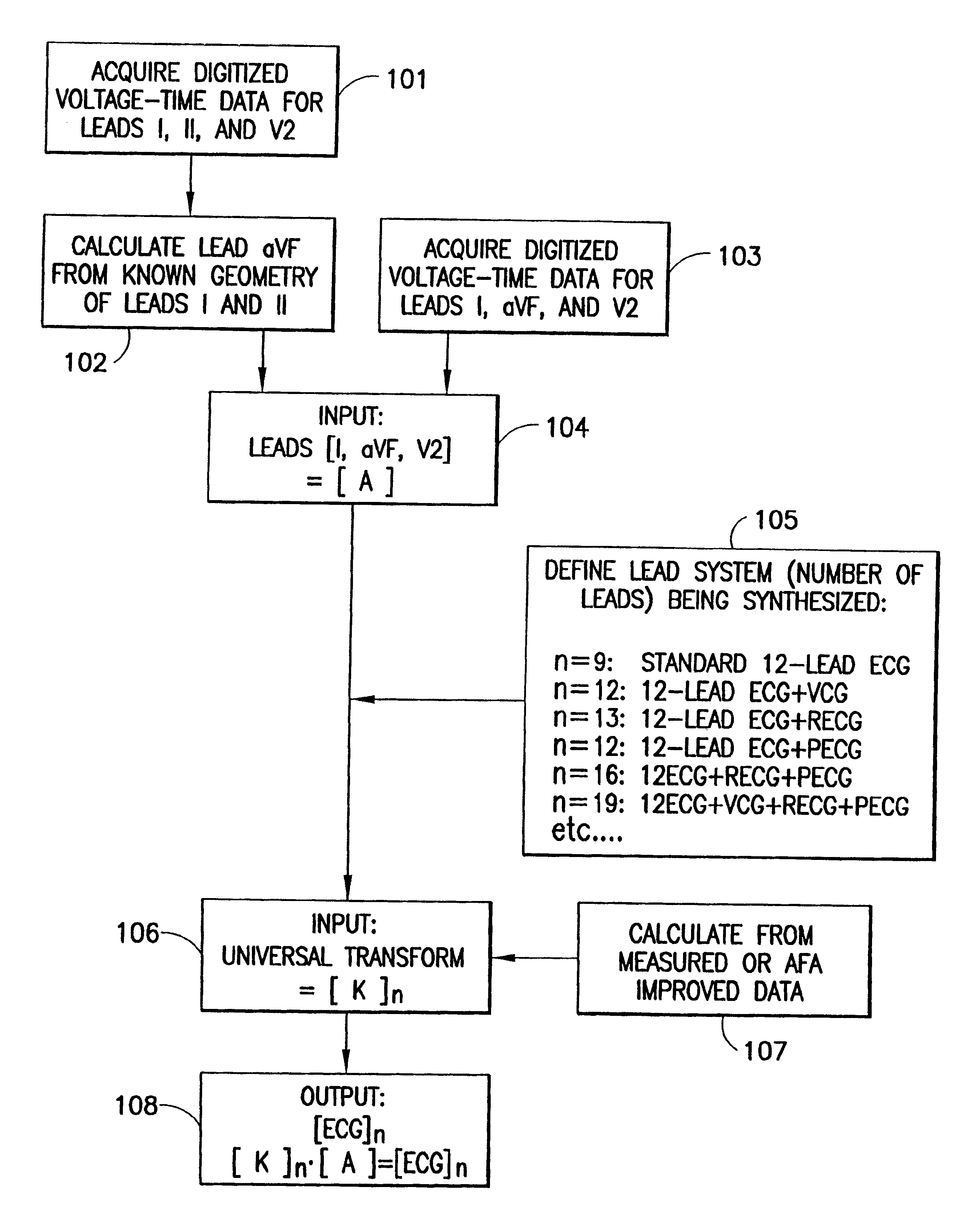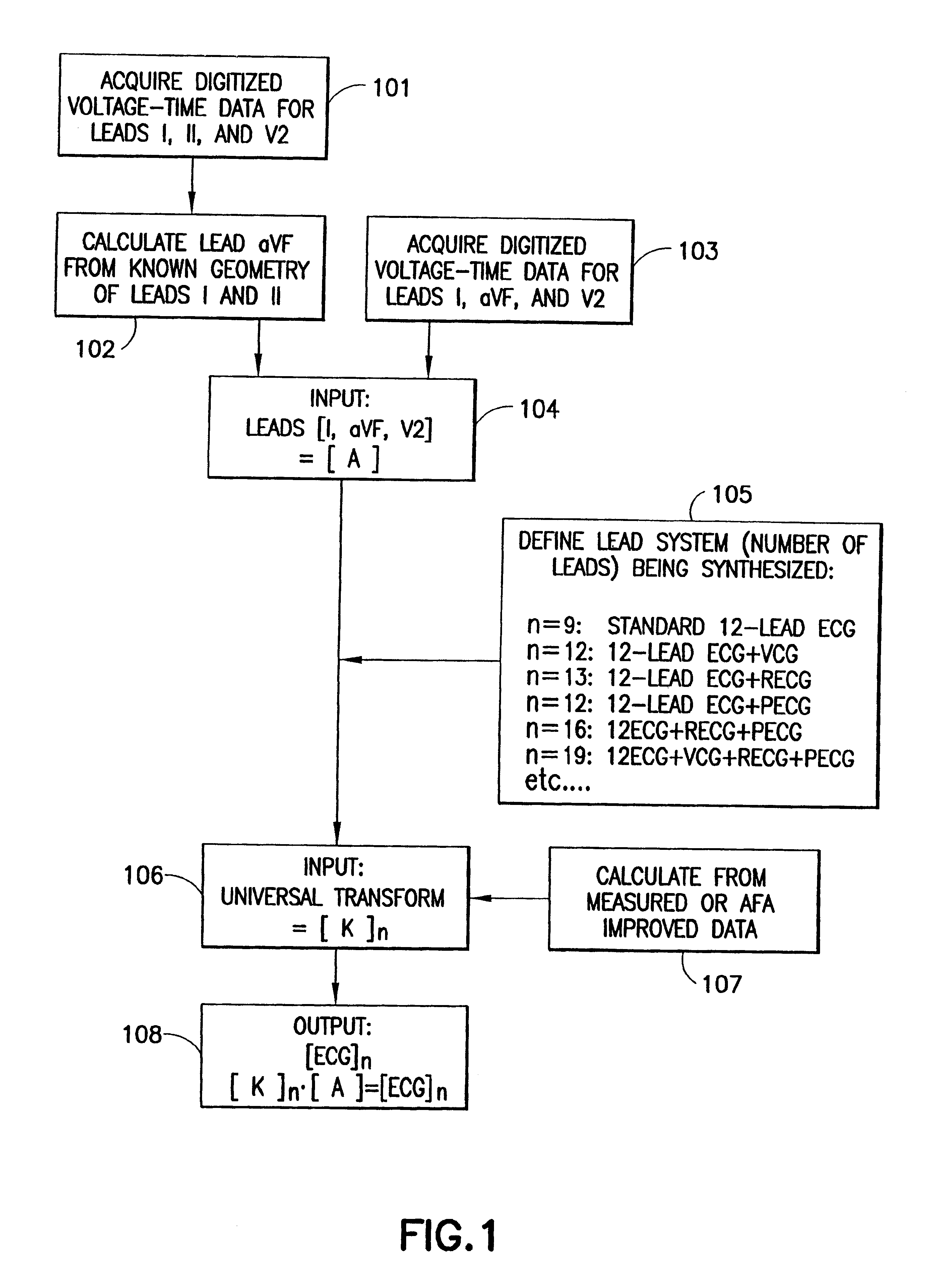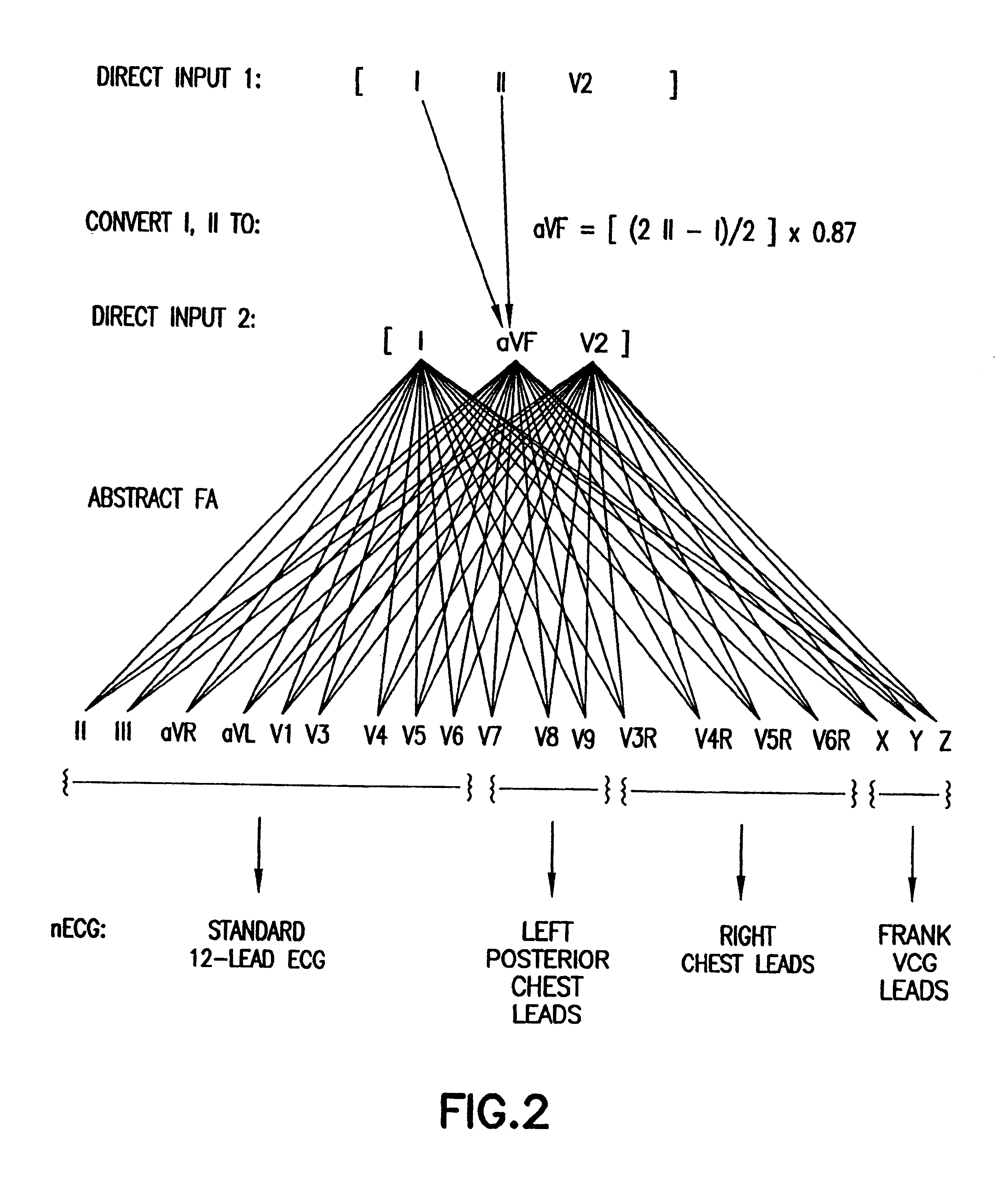System and method for synthesizing leads of an electrocardiogram
a technology of electrocardiogram and lead synthesizer, which is applied in the field of system and method for synthesizing leads of electrocardiogram, can solve the problems of not being familiar to most clinical staff, no single manufacturer currently makes equipment that allows, and not being able to meet the needs of medical sta
- Summary
- Abstract
- Description
- Claims
- Application Information
AI Technical Summary
Benefits of technology
Problems solved by technology
Method used
Image
Examples
Embodiment Construction
[0037]The full cycle of cardiac activity is represented by a wave known as the PQRST wave, defined by Einthoven, Arch. ges Phys. 150:275, 1913, reprinted in Am. Heart J. 40:163, 1950, translation by H. E. Huff and P. Sekelj. This wave represents full contraction and relaxation of the heart. An example of a PQRST wave is shown in FIG. 5. One complete heart cycle averages {fraction (1 / 72)} seconds.
[0038]A flow chart illustrating the overall process of synthesizing and using the universal transformation matrix of the invention is depicted in FIG. 1. The first step, shown in block 101, is to acquire a sequence of digitized voltage-time data for one complete cycle for leads I, II, and V2. Multiple data sets can be acquired, and each set typically contains upward to 300 measurements. From the known geometry of leads I and II, lead aVF can be calculated in block 102. The formula for generating lead aVF from leads I and II is shown at step 202 of FIG. 2. Alternatively, a sequence of digitiz...
PUM
 Login to View More
Login to View More Abstract
Description
Claims
Application Information
 Login to View More
Login to View More - R&D
- Intellectual Property
- Life Sciences
- Materials
- Tech Scout
- Unparalleled Data Quality
- Higher Quality Content
- 60% Fewer Hallucinations
Browse by: Latest US Patents, China's latest patents, Technical Efficacy Thesaurus, Application Domain, Technology Topic, Popular Technical Reports.
© 2025 PatSnap. All rights reserved.Legal|Privacy policy|Modern Slavery Act Transparency Statement|Sitemap|About US| Contact US: help@patsnap.com



